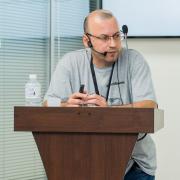
Igor Kosenkov
PostgresPro
10:25
04 April
22 min
Corosync-Pacemaker HA cluster. Work on mistakes
I will talk about the common mistakes when setting up a Corosync-Pacemaker failover cluster. Often these mistakes lead to fatal consequences, and, as a result, to the rejection of the chosen solution in favor of others. Would you like to get a recipe for the "right" cluster?